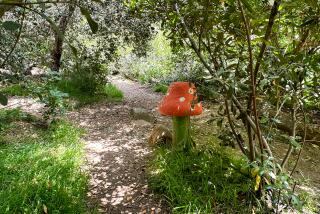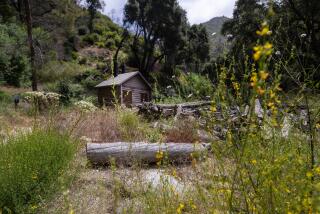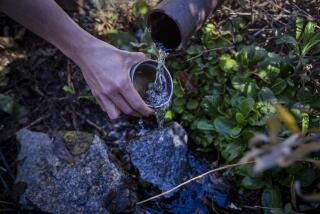A Shore Thing
- Share via
LAKE FOREST — It’s an unlikely battle between haves and have-nots in one of Orange County’s most bucolic pockets. And both sides say the issue boils down to fairness.
Only about a fifth of Lake Forest’s residents get to sail and fish and otherwise frolic in the city’s two private lakes. But those residents think that all of the town’s taxpayers should foot the $2-million bill to clean up the weeds and scum they say have sullied their playground, draining there from public streets and surrounding housing tracts.
The message from non-lake residents who are firmly booted from Lake Forest I and Lake Forest II if they venture in uninvited: Clean it up yourself.
“I have yet to find one person who feels that the city should foot the bill,” said Lake Forest resident Gene Mason. “The only ones benefiting would be these private lakes, which only members of their [homeowners] associations have access to.”
The issue came to light at a council meeting last month and is already driving a wedge between neighborhoods.
“This could be very divisive,” Mason said. “There might be a lot of hard feelings over this one, and that would be too bad.”
The man-made lakes were designed about 25 years ago to accept drainage from surrounding housing tracts. The idea was to maintain water levels, but the runoff waters also carry debris and chemical pollutants that lake officials say foul the waters.
The proposed solution to the drainage problem: interceptor basins that would divert the tainted water to the storm drain system. The $2-million price tag would make the capital project the largest in the city’s five-year history.
Lake Forest I is about 18 acres while Lake Forest II covers about 35 acres. About 12,000 people live in the homeowners associations that have access to the lakes, and they say the runoff comes from public streets. So it is the city’s responsibility, they argue, to fix the problem.
Carrying gasoline, motor oil, detergents and other urban byproducts, the runoff “degrades the quality of the lake water . . . [and] creates a greenhouse effect,” said Don Danyko, general manager of the Lake Forest I Homeowners Assn. “We wind up with a lot of algae, adding to the cost of maintenance. The lake gets so gummed up with weeds, sometimes it’s hard to run a boat.”
Besides, the city has an obligation to provide basic services to private homeowners associations, particularly when the lake associations make up about a fifth of the city’s population, Danyko said.
“Our residents also pay taxes,” he said. “We’re just as entitled to have our tax dollars redirected into our neighborhoods.”
*
Although some of the substances that filter into the lake, such as motor oil, are classified as toxic, Danyko said the runoff has not created a health hazard.
City officials say little runoff comes from public roads. Nevertheless, the city recently applied--unsuccessfully--for a government grant to pay for the interceptor drains.
Officials now plan to seek other sources of funding for the project, but they realize the job may eventually fall to them.
City Councilman Richard Dixon reasoned that the city finances other projects that benefit only a relatively small portion of the population.
“I realize that a vast majority of citizens can’t use the facility at all,” he said. “But there are clearly times when we are going to build specific projects in specific areas. One of the reasons we incorporated was to take care of projects to benefit our community.”
Still, the city has not yet decided whether to finance the project.
*
Lake Forest has about $9 million in cash reserves, but is committed to other key projects, such as the multimillion-dollar revitalization of El Toro Road.
With a long list of expensive improvements already in the city’s long-range plans, the council has to figure out whether the interceptor drains deserve a high priority, Dixon said.
“There’s only so much money to go around,” said Dixon. “We have to decide as a community where our priorities are at.”
For some of Lake Forests 58,000 residents, particularly those who live around the lakes, the issue comes down to civic identity.
The city was named after its private lakes when residents voted for cityhood in 1991, but even that vote passed by the slimmest of margins. Six years later, some residents are still bitter over the name change from El Toro.
But people like Jim Richert, homeowners association president for Lake Forest II, said the lakes have become a community landmark.
“The name of our city is Lake Forest and the lakes are a benefit, not only to those who live on the lake,” said Richert. “They’re a visual enhancement and resource to everyone in the city.”
(BEGIN TEXT OF INFOBOX / INFOGRAPHIC)
Awash in Controversy
Some residents balk at using tax money for cleaning private lakes in gated community
Lake Forest 1 spans 18 acres
Lake Forest 2 covers 35 acres
More to Read
Sign up for Essential California
The most important California stories and recommendations in your inbox every morning.
You may occasionally receive promotional content from the Los Angeles Times.










